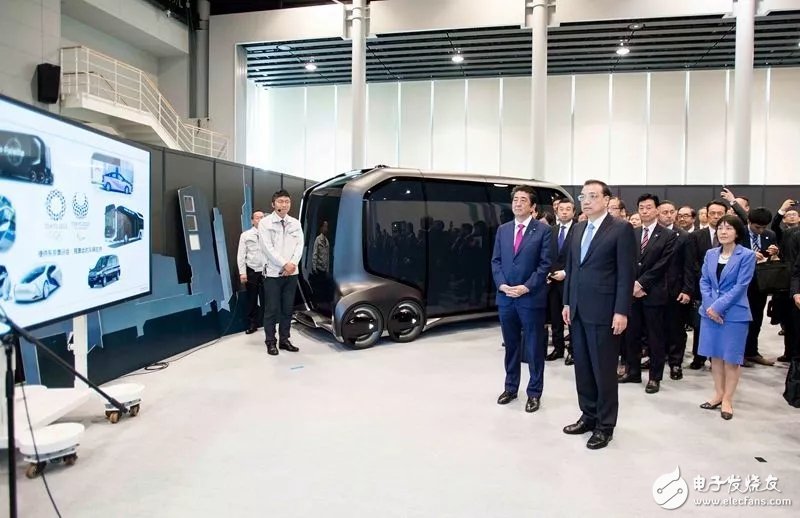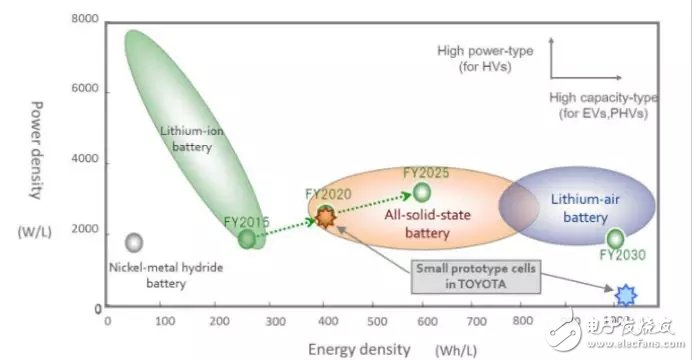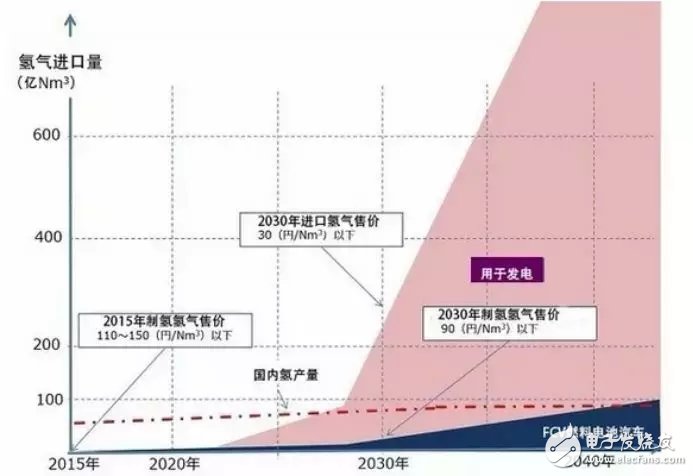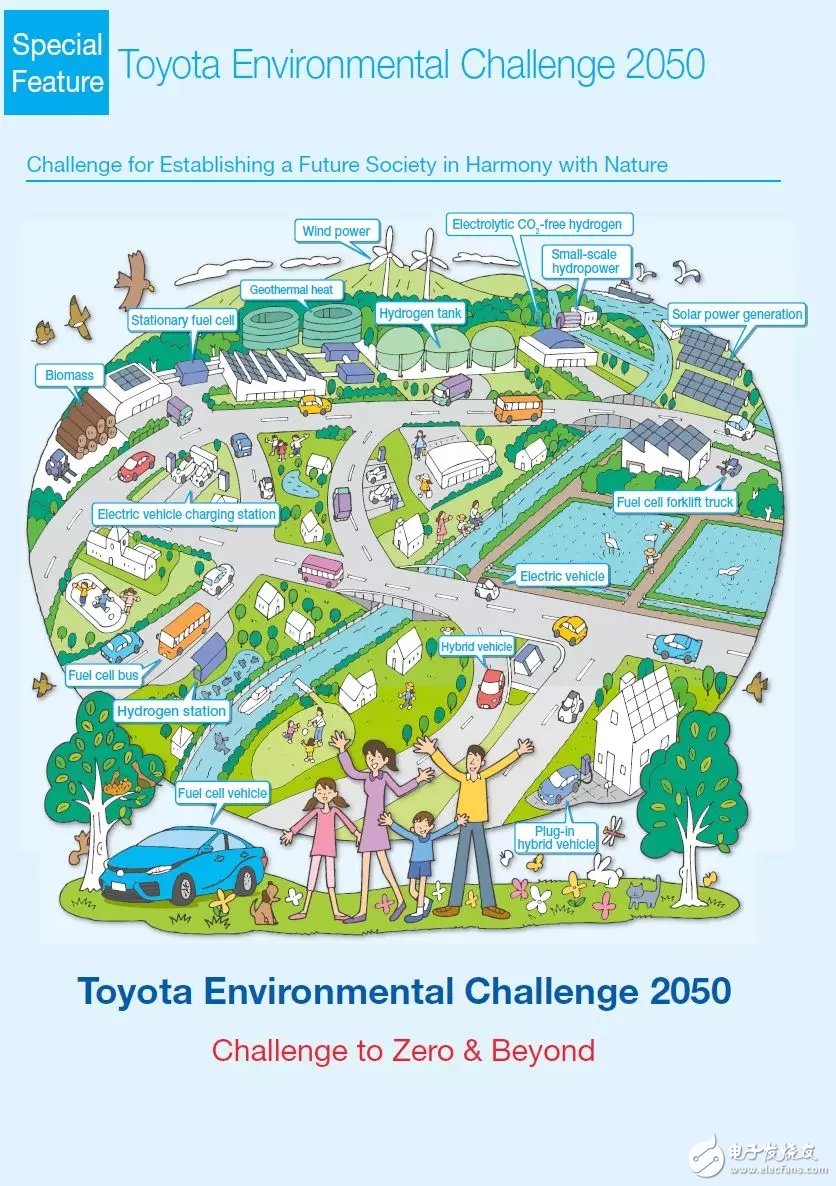On May 11, Premier Li Keqiang visited Japan, visited a Toyota parts factory, and visited the hydrogen fuel cell vehicle Mirai and the mobile travel platform concept vehicle E-Palette. It is said that the itinerary of this visit was proposed by China on its own initiative, and the Premier showed strong interest during the visit.

These two products interpret the future cars in Toyota's eyes from the two directions of electrification and sharing.
As the world's TOP2 car company with global sales and TOP1 profitability, Toyota's future strategy is undoubtedly worth studying. Toyota has actually given clarity on the four dimensions of electrification, connectivity, intelligence and sharing. s answer.
Solid-state battery + hydrogen fuel cell: early start, many patents, and high barriers.
Toyota's new energy route may be the clearest and most practical of all car companies.
In summary, it is a fundamental plus an entry point.
The fundamentals are the transition from hybrid/plug-in hybrid vehicles to the future of hydrogen fuel cell vehicles; the entry point is to use next-generation battery technology to capture the commanding heights of the electric vehicle revolution in order to restore the neglect of electric vehicles in the past strategic layout.
Two years ago, when I saw Toyota’s 2050 strategy (Toyota released the Toyota 2050 Challenge in 2015), I also felt that Toyota was too conservative. When major car companies invested heavily in pure electric (BEV) routes, Toyota’s future In the picture, FCV (hydrogen fuel cell) and HCV (hybrid power) are still the mainstay.
After the two years from 2016 to 2017, the voice of the industry has gradually become more rational. People have begun to reflect on pure circuit lines, and everyone has begun to think seriously. After all, the purpose of making electric vehicles is to save energy and reduce emissions. It does not make sense to stick to BEV. If BEV cannot be quickly promoted due to battery technology bottlenecks, energy density upper limits, infrastructure constraints and other factors, nor can it achieve a broader future, then more practical energy-saving and environmentally-friendly power forms such as plug-in hybrid and extended range should occupy a more important position. . At this time, looking back at Toyota's energy route, hybrid/plug-in hybrid + hydrogen fuel cell, it is a typical layout that focuses on the present and is laid out in the future.
Hybrid technology was first invented and applied by Toyota. With the hybrid Prius, Toyota has achieved great success all over the world and has established a strong barrier to competition for itself. Toyota's exploration of hybrid and pure electric technologies is almost simultaneous, but the first pure electric model is a pure electric SUV based on the RAV4 transformation. The starting point is that the pure electric model is easy to drive and the performance of the motor drive is better. On the one hand, SUVs can help drivers who run long distances to reduce their driving burden (good for humanity considerations, but what is the starting point for pure electric SUVs on the market?) On the one hand, they can satisfy users' pursuit of speed.
As a result, this model failed.
The Toyota Prius, which was introduced to the market in the same year, was a great success.
Since then, Toyota's hybrid strategy has continued to expand, while pure circuit lines have become smaller and smaller. It can be said that Toyota has long used practical actions to reveal the difficulty of electric vehicle promotion, which is far greater than hybrid. So pragmatically chose the latter.
While gradually determining the new energy technology route, Toyota has also been working hard to invest in battery technology research and development. The picture below, released by Toyota at the International Lithium Battery Forum (IMLB) in June 2014, outlines Toyota's future plans for lithium battery technology. It can be seen that Toyota plans to realize the popularization of all-solid-state batteries in 2025, with an energy density of 600Wh/L.

Realize the universal application of all-solid-state batteries in 2025

Toyota 2050 Challenge
The picture above is the next-generation car product plan described in the Toyota 2050 Challenge in 2015. It can be seen that the role of EV is a personal commuter car, and the protagonists of the entire future are FCV and HV/PHV. In this plan, Toyota's plan is still to mass-produce solid-state battery cars in 2025.
The obsession with the hydrogen fuel cell route comes from the energy strategy of the Japanese government. As a country that relies heavily on nuclear energy, Japan is also looking for other secondary energy solutions after the Fukushima nuclear leak.
On June 13, 2013, the Japanese government proposed the national strategy of "Japan is BACK", which involves the promotion of technologies such as household hydrogen fuel cells and hydrogen fuel cell vehicles. The state provides subsidies for household hydrogen fuel cell water heaters. Many universities have also completed a number of scientific research results in hydrogen storage tanks and hydrogen fuel cell catalysts. At the same time, the construction of hydrogen refueling stations has been in full swing in Japan for many years, and its density has become World number one.
In 2014, the Abe government proposed hydrogen energy as the core of the secondary energy in the energy basic plan, and proposed to promote the popularization of household fuel cells and gradually promote hydrogen fuel cell vehicles from 2015.

The "Toyota Environmental Challenge 2050" launched in 2015 directly put FCV in the most important position in the future, and the role of BEV is very limited.
By the way, the FCV was first developed by Honda, but Toyota first achieved mass production.
In 2015, Toyota Mirai was officially released through experimental verification. The Mirai on sale is Toyota's first mass-produced fuel cell vehicle. The electric energy is provided by a fuel cell stack that reacts with hydrogen. The AC motor brings 114kW (155PS) of maximum power to the driving wheels. Compared with traditional internal combustion engines, the energy efficiency of hydrogen fuel cell stacks is superior. Hydrogen fuel can be filled in 3 minutes. When the vehicle is running, only water is emitted, which completely achieves zero emissions of pollutants such as carbon dioxide.
But Mirai's market performance has been very unsatisfactory. As of the end of 2017, cumulative global sales were only over 5,300 units.
However, the Japanese cannot resist their longing for a hydrogen energy society. They look forward to repeating the successful experience of successfully promoting the global liquefied gas economy half a century ago, and once again creating a hydrogen energy economy. On December 26, 2017, the Japanese government issued the "Hydrogen The basic energy strategy" has determined the goal of building a hydrogen energy society in 2050 and a specific action plan to 2030. Specific to the automotive industry, Toyota also hopes to continue to promote FCV technology, just as it once used its own efforts to promote the popularization of hybrid vehicles around the world.

On the other hand, starting in 2015, electric vehicles have shown explosive growth in major countries and regions-mainly the growth of new start-up companies, with a large amount of capital behind them, and the entry of sand and mud. At the same time, after the smooth transition of Tesla Model S to large-scale mass production, sales in North America frequently hit Mercedes-Benz and BMW products at the same level, making traditional car companies a little bit cooler, while in the Chinese market, the dual-point policy is strong. Orientation also makes traditional big car companies feel Alexander.
Toyota can't sit still.
At the end of 2016, Akio Toyoda announced that he would establish a pure electric vehicle division and personally take charge.
In July 2017, China-Japan Shimbun reported that Toyota Motor is developing electric vehicles powered by all-solid-state batteries. This kind of battery can increase the cruising range of electric vehicles and reduce the charging time. According to reports, Toyota plans to start selling the electric car in 2022.
In September 2017, Toyota announced the establishment of a joint venture EV CA Spirit with Mazda and Denso to jointly develop electric vehicle-related technology products. Six months later, four companies including Subaru, Suzuki, Daihatsu and Hino joined, and EV CA Spirit became Japan. The largest auto league.
At the 2017 Tokyo Auto Show, Toyota’s executive vice president mentioned in an interview with Reuters that Toyota’s solid-state batteries will be a game changer. This next-generation battery technology has longer battery life, faster charging, and safer, but it takes time for commercialization. The node still insists on the argument of the first half of the 2020s. Toyota Motor President Takeshi Uchiyama said that pure electric technology and hydrogen fuel technology are indispensable for the future. Toyota will not abandon the FCV route. As for BEV, Toyota will increase its investment in solid-state batteries. Battery life is longer. It can only be used for three years at the current level. This life cycle is far from enough for Toyota.
At the end of 2017, Toyota finally officially announced its pure electric product plan. It plans to launch more than 10 electric vehicles between 2020 and 2025 to accelerate its global electric vehicle sector layout. By 2025, it will further reduce its engine models. At that time, all Toyota vehicles sold in the global market will be changed to pure electric vehicles (EV), plug-in hybrid electric vehicles (PHV), hybrid electric vehicles (HV), etc.
The latest news is that with the support of the Japanese government, Toyota, Honda, Nissan and Panasonic will jointly participate in the research of solid-state battery projects. The Japanese government hopes to use a new generation of battery technology to help Japanese car companies such as Toyota gain a competitive advantage in the field of electric vehicles, so that Japanese cars can maintain their previous dominance in the new round of changes.
It can be seen that FCV is an inevitable choice from Japan's national strategy. As the world's largest auto company, Toyota is the representative of the Japanese auto industry. For Japan, as the energy structure transformation is imminent, finding a more accurate future technological route is a must for survival.
The Prime Minister visited Toyota's Mirai a few days ago, and there was an uproar in the country, and they began to discuss whether the Chinese EV route and the Japanese FCV route are better. As mentioned in a 2017 Reuters report, it is believed that behind this divergence is actually a contest between different routes at the national level.
This incident reminds the counterparts of electric vehicles, that is, the battery route is not counted by anyone... Just look at the actions of the big manufacturers.
I have to admit that when I wrote the E-Palette concept car in the CES report at the beginning of the year, I did not notice Toyota's real advantage in this matter-it is not just finding the best concept and then popularizing it. Japan, which has a small land with a large population and an extremely dense population, has a deep and pragmatic understanding of future transportation and travel. It is not surprising that Toyota announced its transformation into a travel service company at CES. Understanding travel and service travel are the genes in Toyota's bones. .
Outdoor Led Display,Outdoor Led Wall Display,Outdoor Led Walls,Outdoor Led Diigital Display
APIO ELECTRONIC CO.,LTD , https://www.displayapio.com
